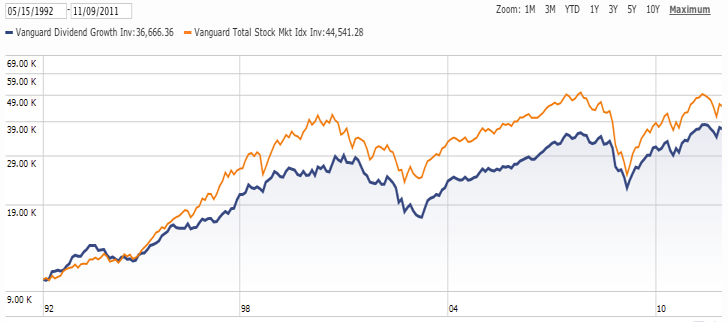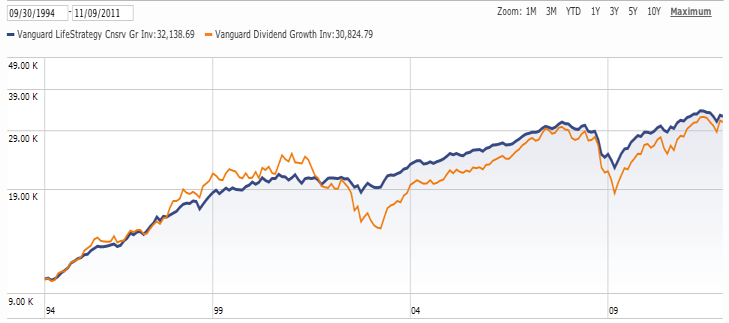Value tilting stock
Post on: 16 Март, 2015 No Comment

Background
The intent is that these distribution percentages, by definition, accurately represent the composition of the entire market. Gain and loss over time represents the movement of the market as a whole.
If you invest $1.00 in a total market index fund, each stock receives the same amount of your dollar in proportion to its cap weight. The largest stock gets 100 times the amount of a company 100th its size. Therefore, no company gets more or less than that determined by its market capitalization.
Tilting
Tilting is defined as any deviation (change) from the Total Stock Market distribution percentages as previously defined.
Historically, value stocks and small stocks have provided higher returns than large blend and growth stocks (in both domestic and foreign markets). The theoretical basis posited for these higher returns states that small stocks and value stocks are riskier than large and growth stocks, and that the higher returns compensate investors for higher risk. [5] [6] [7] Based on theory and past performance, some investors choose to add additional value and small stocks to their portfolios. Many investors who tilt employ what is termed a 4×25 allocation consisting of equal parts of 25% large blend; 25% large value; 25% small blend; and 25% small value. Tilters employ blend indexes for growth stock exposure in response to the long term performance of small cap growth stocks. [8] [9] Other tilters, valuing greater portfolio simplicity, overweight small value stocks by adding a small value fund to the market portfolio. [10] Overweight means increasing your holdings to more than is naturally in the market profile.
As an example, the Small cap styles represent 9% (3 + 3 + 3) of the total market. Tilting to Small means overweighting your portfolio to hold more than 9% of Small cap stocks.
Considerations
Asset allocation
Bogleheads author Larry Swedroe suggests that tilting to stocks with higher expected returns, such as small-cap and value, can allow the investor reduce overall equity exposure while maintaining the same expected return for the portfolio. Holding a smaller allocation to stocks and a larger allocation to bonds reduces fat tail risk; i.e. the risk of unexpected events that have a large negative impact on the overall stock market.
Duration
Tilted portfolios require long holding periods as the market, value, and size factor returns often rotate over time. [11]

Investor behavior
The investor’s behavior during bear and bull markets can influence results. An investor who tilts must be able to hold to the allocation during periods when the tilted equity portfolio underperforms the market portfolio. An investor should also resist the temptation to engage in performance chasing, that is buying or selling a size or style tilt based on recent performance.
Rate of return
Although small-cap and value stocks may have higher expected returns than large-cap and growth stocks, investors should recognize that the record of realized returns does not assure a similar pattern in the future. The timing and magnitude of the small and value premiums will always be uncertain, i.e. past performance does not predict future performance.
Taxes
In a taxable account, value funds have an additional tax cost, because they tend to have higher dividend yields. Rebalancing between multiple funds may also add to the tax cost if the rebalancing cannot be done with new money. Small-cap and value index funds are more likely to realize capital gains, although tax-managed funds and ETFs reduce this tax effect. Much of the extra tax cost can be avoided by tax-efficient fund placement for an investor with both tax-advantaged and taxable accounts if the value funds can all be held in a tax-advantaged account.














